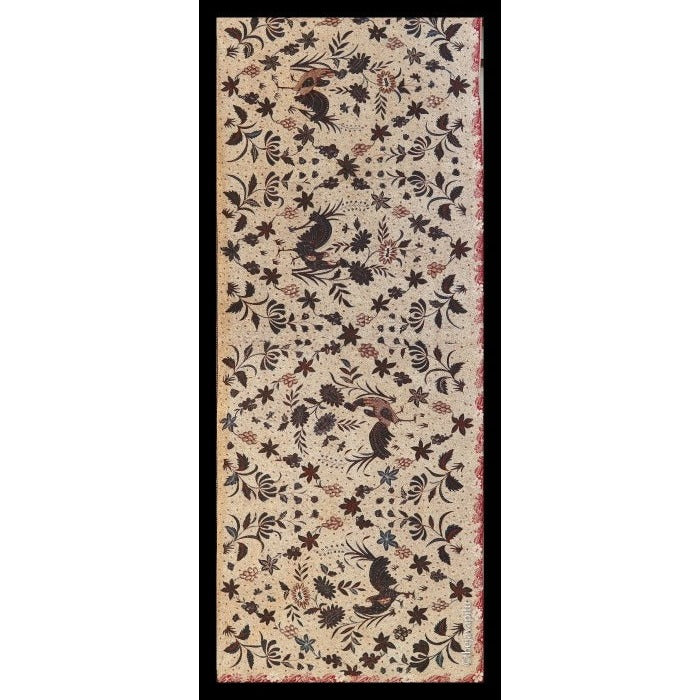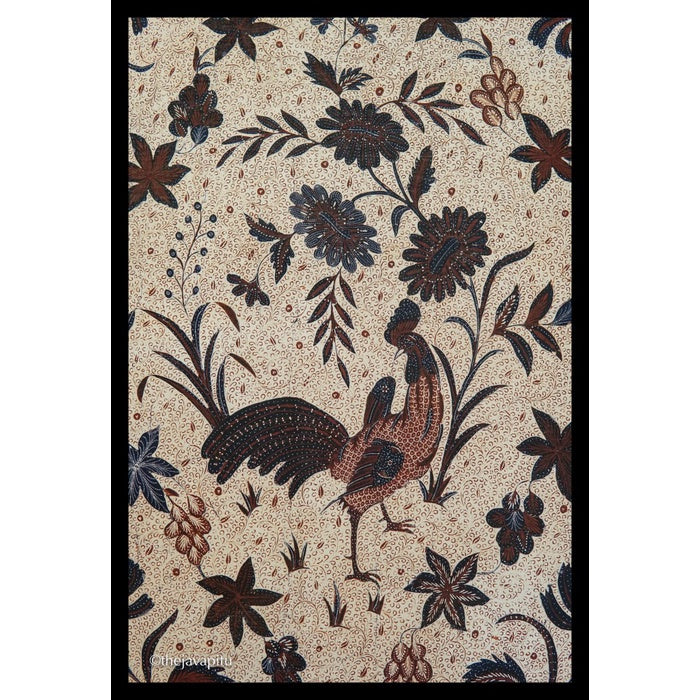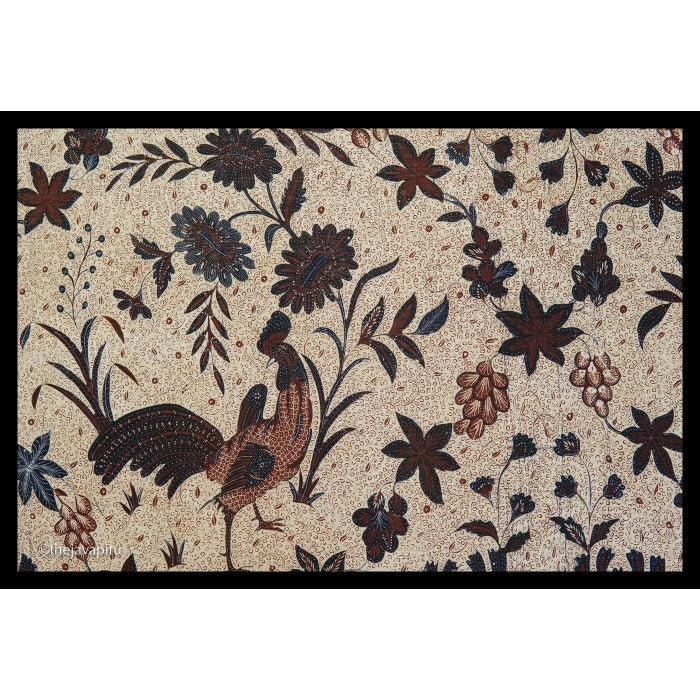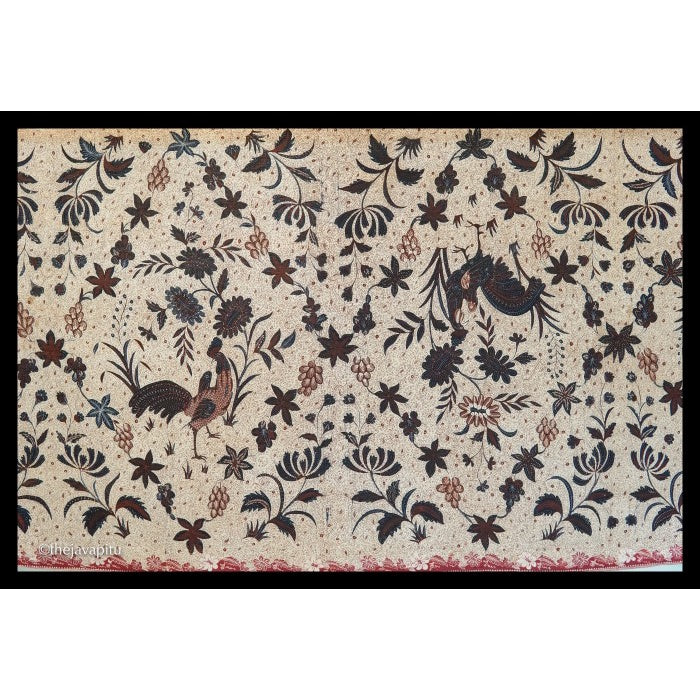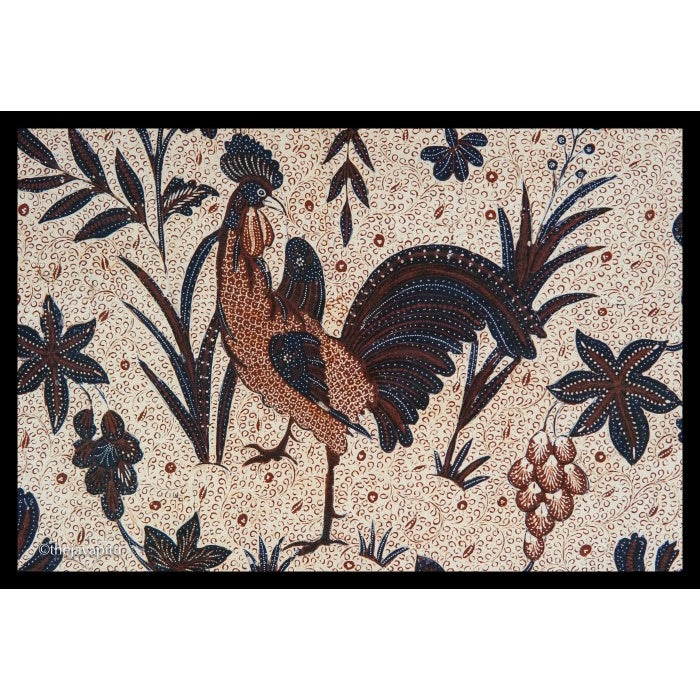Javapitu
1950s Tulis Batik wax resist " Matheron " Style, PAGI - SORE
1950s Tulis Batik wax resist " Matheron " Style, PAGI - SORE
Regular price
Rp 4,299,000.00 IDR
Regular price
Rp 6,141,428.00 IDR
Sale price
Rp 4,299,000.00 IDR
Unit price
per
Couldn't load pickup availability
Add a bit of vintage style to your wardrobe with this 1950s Tulis Batik wax resist "Matheron" style long skirt from Javapitu. Crafted from Kwee Hoe Kwie's workshop in Banjumas, Java, this exquisite piece features 4 Rooster patterns, Sun Flower, Magnolia Champaka, Grape Fruit, Diamond Shape, Ukel and Red Borders. In perfect condition, this is a must-have collectible item.
1950s Tulis Batik wax resistMatheron ; Style, PAGI - SORE Kain Panjang, Skirt
cloth
Workshop of Kwee Hoe Kwie in Banjumas,Java
Main pattern: 4 Rooster
Identified decoration pattern : Sun Flower, magnolia
champaka, Grape fruit, Diamond shape, Ukel, Red
Border,
Size: 265 x 105 cm
The Javapitu collections
Condition : Perfect, Collectible Item, This cloth is well maintained
If you need more information, you can contact via chat or whatsapp.
----------------------------------------------------------------------------
Guarantee 100% Authentic antique batik curated by Thejavapitu, Has a selected and exclusive collection of batik from several regions in Indonesia.
Original batik is made using canting and wax (real honeycomb) which is melted with other materials as a color barrier. and this is called " Batik Tulis " / Hand Drawn batik,
And still undergoing a complicated process from processing raw materials / plain cotton fabric into a BATIK.
If batik is made using a copper mold (usually made of copper) we call it " BATIK CAP " / Stamped batik.
Can shorten the time of manufacture and reduce the cost of batik production, but this clearly affects the value of its art, because it produces repetitive batik patterns, monotonous patterns and tends to be made as a mass product.
For 1 color will undergo a dyeing process 3 -7 times until the color is as expected.
Therefore batik coloring with one another will never be the same due to weather factors, water pH factors, type / brand / coloring method used, type of cotton material. etc
Note:
1. This batik can’t be reproduced
2. If this batik is washed, it may experience a process of releasing color. This is generally due to the coloring element of the batik itself. Does not affect the overall color much as long as using a safe and natural detergent, such as soapberri
